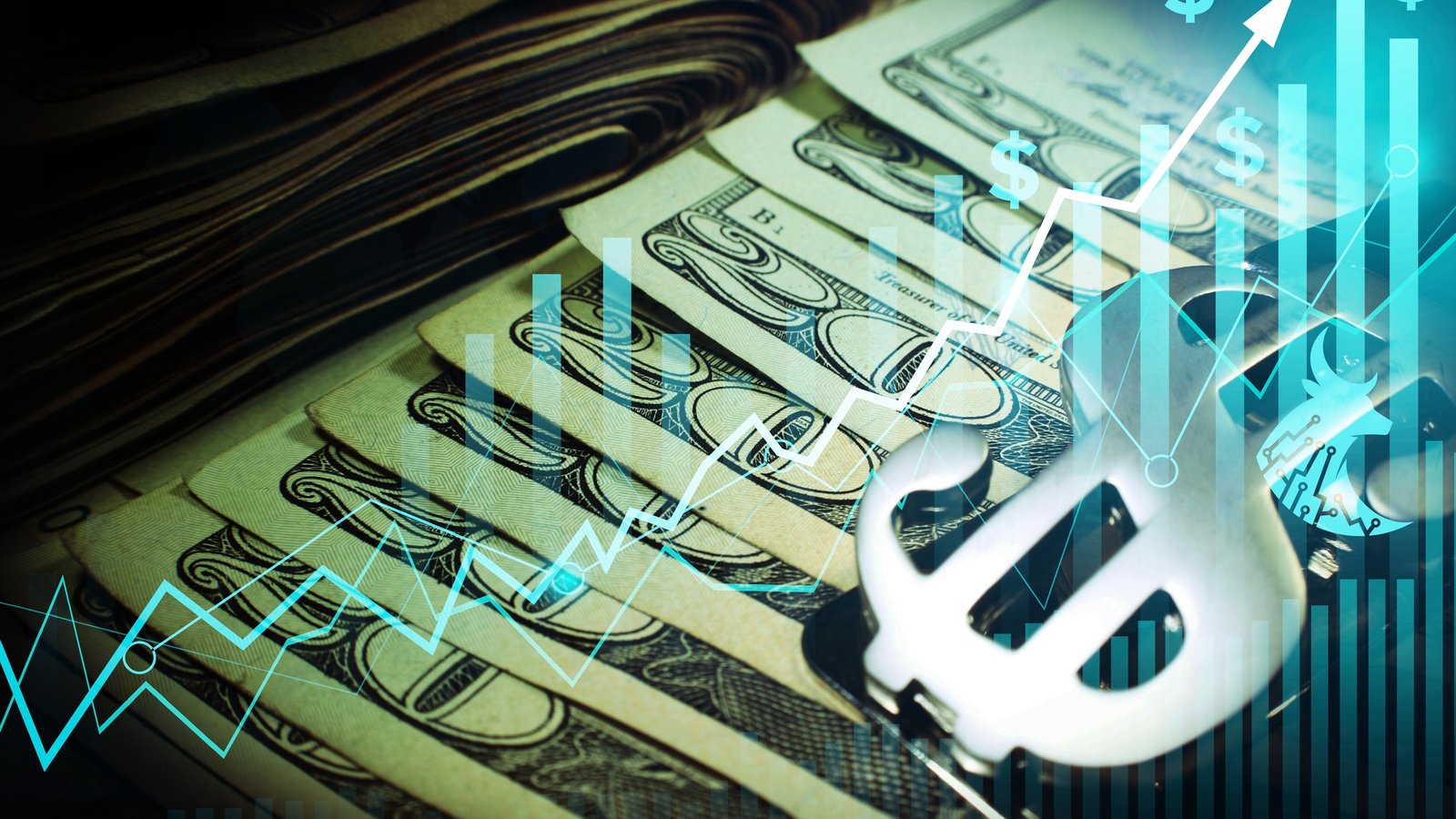Dividends were how people traditionally got their money out on investments. The obsession with capital gains is relatively recent.
It’s not the only way for management to give you money. Stock buybacks have become even-more popular than dividends in recent years. Buybacks support the price of a stock, they’re not taxed, and they help management as much as investors, as stock is increasingly used for compensation.
Dividend aristocrats, however, are companies that manage to raise their dividend every year for at least a quarter century. They’re companies you can put in your portfolio and then forget.
But the good times can end. When you hear bad news about a dividend stock you own pay attention. The fall, when it comes can be precipitous, and final.
A few years ago, General Electric (NYSE:GE) would have been an obvious member of this list. It had been a member of the Dow Industrials from its founding and had stayed on top of change for generations. But under Jeffrey Immelt it lost the plot. It got out of banking, entertainment and consumer appliances. Instead, it became an energy company, and it was crushed in the post-2014 energy bust. Today’s GE is in the process of a break-up that could lead to a retirement of the name.
There are some great dividend stocks that aren’t on this list. The Coca-Cola Co. (NYSE:KO) has paid a rising dividend for decades, but the rise has been gradual. Pepsi-Cola (NYSE:PEP) is a great dividend company, but results have been inconsistent.
You may note also note a paucity of tech stocks on this list., There’s a reason for that. Tech companies need a lot of cash to get through the market’s valleys. They must continue to invest, even when business slows, or they miss the next rise. Companies like Intel (NASDAQ:INTC) and Cisco Systems (NASDAQ:CSCO), with strong dividends, may be seen as coasting, vulnerable to both new trends and the unforgiving pace of change.
When building a dividend portfolio, look to recent performance as well as history. Look for management whose language you can comprehend. Long words and fancy charts are often hiding poor performance. Look for a commitment to the dividend, to pride in it. Mostly, look for market advantages that are scaled and can last.
Then relax. Your money is making money.
| Ticker | Company | Recent Price |
| XOM | Exxon Mobil | $84.54 |
| AAPL | Apple | $150.17 |
| MSFT | Microsoft | $256.72 |
| HD | Home Depot | $292.41 |
| IBM | IBM | $139.92 |
| MO | Altria | $41.99 |
| JNJ | Johnson & Johnson | $178.23 |
| CVX | Chevron | $137.65 |
| WMT | Walmart | $129.07 |
| PG | Procter & Gamble | $144.91 |
Exxon Mobil (XOM): 20th Century Limited
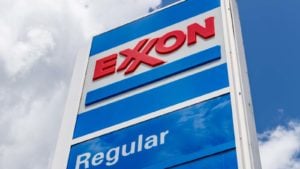
No company has produced more profit over the last century than Exxon Mobil (NYSE:XOM). No company has ever done more damage to the environment, putting life on Earth at imminent risk in the 21st century.
Exxon Mobil is the largest piece of the old Standard Oil monopoly, which scaled the production and refining of oil in the 19th century under John D. Rockefeller and began paying dividends in 1882. As Standard Oil of New Jersey it became part of the Dow Jones average in 1928, when the list first expanded to its present number of 30. Over 90 years it created $1 trillion in wealth.
The last few years, however, have been a roller coaster. Exxon Mobil was a big part of the 2010s’ oil boom, then part of the decade’s bust. Shares bottomed in late 2020 at $34/share. Even as the stock price fell, the dividend continued to increase. It now stands at 88 cents/share.
Exxon Mobil stock peaked at over $100/share in June, opening July 13 at $84. At that price the dividend yields 4.2%, still respectable but nothing like it was at its 2020 low. I have written that it’s a false dawn. Either we wean the Earth off fossil fuels, or companies like Exxon will destroy it.
Apple (AAPL): Scaled Monopoly
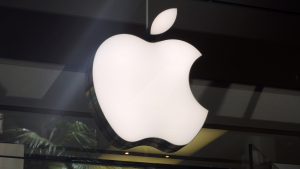
For many years Exxon Mobil was the largest company in the world by market cap. Today that crown is held by Apple (NASDAQ:AAPL).
The Rockefeller of Apple was the late Steve Jobs (1955-2011), the iPhone his crowning achievement. But his management genius may be eclipsed by successor Tim Cook, who has taken control of the supply chain, invested in cloud data centers, and maintained control of Apple’s software and application ecosystem.
It’s that ecosystem that’s the key to Apple’s profits. There are no Apple clones, and apps pay a 30% commission on sales made through Apple’s app store. Profits from the app store have let Apple enter a host of consumer markets, from health with the Apple Watch to media with Apple TV+, to banking and payments with Apple Pay and the Apple Credit card.
Jobs was not a fan of dividends, but Cook has been paying them since 2012. He has also used stock splits and buybacks to keep the stock price reasonable. On a split-adjusted level Apple’s first dividend was worth less than .1 cent/share. Today the dividend is 23 cents/share. The yield for new shareholders is just .64%, but if you have stayed with the stock since Cook’s ascension it’s 4.2%.
What Jobs liked most were capital gains. Cook has increased the value of Apple by nearly 1,000%, and its market cap is now $2.34 trillion. It can’t lift the market by itself, but unlike Exxon it has every chance of leading the next leg up.
Microsoft (MSFT): King of the Cloud
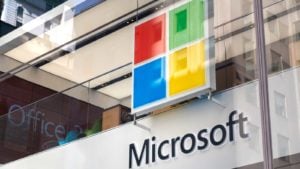
Microsoft (NASDAQ:MSFT) paid its first dividend in 2003, when its success was based on control over the Windows operating system. It survived the government’s antitrust assault and, once it ended, came to dominate the new industry of cloud computing.
As Tim Cook’s performance eclipsed Steve Jobs’ at Apple, so Satya Nadella has outdone Microsoft co-founder Bill Gates. The key to his success is the cloud. This is a network of huge, networked data centers that use parallel processing and open source to maintain cost control. By renting this capacity, and moving its own software to it, Microsoft build its infrastructure for cash flow. It’s a landlord whose tenants pay all the costs. That’s why I call it a cloud czar.
Since being named CEO in 2014, Nadella has increased the dividend by 400%, from 47 cents/share to $1.90. He has also delivered 256% of capital gains, an average of 32% per year, even with the 2022 bear market taking the stock down by more than 40%. If you bought Microsoft 5 years ago, when it was at $82, your dividend is now yielding over 9%. Grab it now and you could get a similar performance.
Home Depot (HD): King of all Retail

Home Depot (NYSE:HD) is younger than either Apple or Microsoft but has performed even better for dividend investors.
Home Depot was founded in 1978 as a large hardware store. Its IPO was in 1981. It paid its first dividend in 1989. That was the equivalent of 13 cents/share, with shares worth about $20.50. The most recent dividend was $1.90/share, or $7.60/year.
Today Home Depot has over 2,300 stores, and a scaled online sales operation. It has eclipsed Coca-Cola as Atlanta’s premier dividend stock. Just as Coke had Pepsico, Home Depot has Lowes (NYSE:LOW), the huge Charlotte, North Carolina, chain to share its dominance.
The current yield on Home Depot’s dividend is 2.65%, as the bear market has sent the stock down 27% from its high. Its price to earnings ratio is now below 18, making it an incredible bargain for a long-term value investor.
IBM (IBM): The Negative Example
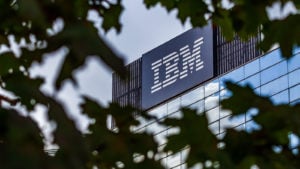
For most of the 20th century, International Business Machines (NYSE:IBM) dominated the field of office automation. From punch cards and typewriters to mainframes and the IBM PC, no one ever got fired for buying IBM.
It’s still a great dividend stock. The $1.65/share quarterly payout will yield you 4.74% if you buy it today. But for the last decade IBM has been a great example of what not to do as a tech company, and how devotion to the dividend can destroy value.
By prioritizing the payout early in the 2000s, rather than investing heavily in the cloud, IBM lost the biggest opportunity of this century. With a market cap of $124 billion it’s now worth less than one-third Meta Platforms (NASDAQ:META), which was founded in 2004. Microsoft, barely a start-up when it supplied IBM its PC operating system, could now buy it 15 times over.
But there is the dividend. IBM has been paying dividends since 1989. The payout was reduced in the early 1990s, to as little as 13 cents/share, but then began a steady climb. The 2021 spin-off of Kyndryl (NYSE:KD), its services division, brought a temporary spike to dividends, in the form of Kyndryl stock.
The 2019 acquisition of open source pioneer Red Hat is finally delivering a growth story for current CEO Arvind Krishna. But this will never be your father’s IBM. Dividends killed it.
Altria (MO): Merchants of Death

Altria (NYSE:MO), the tobacco company, is the health industry equivalent of Exxon Mobil.
Studies proving cigarettes cause cancer are 60 years old. The addictive qualities of nicotine, the active ingredient in tobacco, are also well known. But people still smoke. Since 2008, when it first began offering dividends, Altria has become one of the world’s premier dividend stocks, the dividend tripling from 29 cents/share to 90 cents. Since 2008 the stock price has gained 161% as well.
The dividend has continued to grow despite a sales plateau, with 2021 sales just 5.3% ahead of those in 2018. While cigarette taxes have risen, so have Altria’s prices. The average pack now costs $8. You could get a carton for less when I was a kid in the 1960s.
Altria is still built on cigarettes like Marlboro and oral products like Copenhagen. But it also has a wine business, Ste. Michelle, which had $18 million in profit during fiscal year 2021 on sales of $150 million.
The tobacco business repels many ethical investors. But if you can stand the smell, you will make money. At its July 13 price of $42, the 90 cent/share dividend yielded over 9%. Until recently it was seen as safe, but the price has dropped by one-third since early May. If you like income, it’s a bargain.
Johnson & Johnson (JNJ): Drug Standout

The only drug company on this list is Johnson & Johnson (NYSE:JNJ). It is a true dividend aristocrat, with a payout that has every year in the last half-century, and now stands at $1.01/share.
In 2021 JNJ brought nearly $21 billion of $97 billion in revenue to the net income line and paid out $11 billion in dividends. The yield on that dividend was 1.53% on July 13.
JNJ, however, is about to shrink. Like other drug companies, it is spinning out its consumer products division. The business had $14.6 billion in sales last year. Separately it spun out its baby powder unit, to limit liability from lawsuits.
Many of the remaining drugs are sold under the name Janssen, a Belgian company acquired in 1961. Among its drugs are Stelara and Tremfaya, which treat psoriasis and arthritis, as well as Concerta, an ADHD drug, and a Covid-19 vaccine.
Previous industry spin-outs saw the patented drug companies do better than the consumer brands. That may be the case here as well. Meanwhile, you have one of 2022’s best investments.
Chevron (CVX): The Pepsi of Big Oil

Chevron (NYSE:CVX), like Exxon Mobil, is descended from the old Standard Oil monopoly. In this case it’s the old Standard Oil of California. Its recent history has been one of consolidation, buying Gulf Oil in the 1980s and Texaco in the year 2000. Like Exxon, it develops oil fields around the world, owns refineries and has a retail operation.
Chevron has been paying steady and rising dividends for decades. Since the start of the century, it has risen eight-fold. The most recent hike, in May, was to $1.42/share per quarter. This gave it a yield on July 13 of 4.12%, on a price of $135/share.
Chevron uses debt to handle the ups-and-downs of the oil business. Debt rises when oil prices are low, then falls when they are high. Its immense 2021, sales growing 65% to over $152 billion, and 10% of that reported as net income, let it cut its debt load by $12 billion.
In recent years it has also been cutting its capital budget. This continued to fall in 2021, from $8.9 billion to $7.6 billion. It is this slow-motion liquidation that helped create the current oil spike. Spending on exploration and refining both fell despite rising prices. That may be good for the planet, and good for investors, but it has been bad for the market since Russia’s invasion of Ukraine.
Walmart (WMT): Legacy of a Cheapskate

Walmart (NYSE:WMT) founder Sam Walton was a legendary cheapskate, who lived a modest life. His legacy is a dividend aristocrat, now offering 10 times the payout of 30 years ago, and the world’s largest fortune. Taken together, the fortune now held by “Mr. Sam’s” descendants is worth $247 billion. Elon Musk is worth $225 billion.
For investors, Walmart is an example of how misleading yield can be. The current dividend of 56 cents/share yields just 1.79% if you buy the stock today. But if you bought 10 years ago, when the stock was at $65, your current yield on that investment is 3.34%, and its value has more than doubled, even with the current bear market.
Under Doug McMillon, a Walmart lifer who began as a grocery bagger and CEO since 2014, Walmart has made Amazon (NASDAQ:AMZN) its Moby Dick, seeking to copy or counter its every move. This includes a sale to compete with Prime Day, a membership plan called Walmart Plus, and a third party marketplace, warehousing and fulfilling orders from small merchants.
Walmart’s revenue is growing at less than 5%/year, but McMillon has doubled net income since 2018. This makes its $6 billion in dividend payments and capital budget of $13 billion affordable. Walmart had $24 billion in operating cash flow last year, and almost $12 billion in cash at the end of March.
Procter & Gamble: Keep it Simple
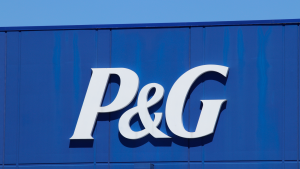
As Procter & Gamble (NYSE:PG) cut some product lines and sold off others in the late 2010s, I openly wondered if it could maintain its dividend.
I need not have worried. The dividend has continued to increase, from less than 75 cents/share in 2019 to over 91 cents in May. The budget for dividends has increased by $750 million/year. Procter & Gamble is a true dividend aristocrat.
This has kept the stock’s losses in 2022 below 12%, while the average Dow stock has lost almost 17%. The falling price makes the yield even better. The dividend was yielding 2.51% on July 13.
P&G makes what it calls “care” products. These include Tide detergent, Crest toothpaste and Old Spice deodorant. These are backed by a $11.5 billion ad budget, the world’s largest, which the company proudly refused to cut even during the pandemic.
I won’t doubt P&G again.
On the date of publication, Dana Blankenhorn held long positions in INTC, AAPL, AMZN, and MSFT. The opinions expressed in this article are those of the writer, subject to the InvestorPlace.com Publishing Guidelines.
Dana Blankenhorn has been a financial and technology journalist since 1978. He is the author of Technology’s Big Bang: Yesterday, Today and Tomorrow with Moore’s Law, available at the Amazon Kindle store. Write him at [email protected], tweet him at @danablankenhorn, or subscribe to his Substack.
